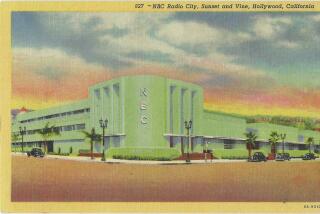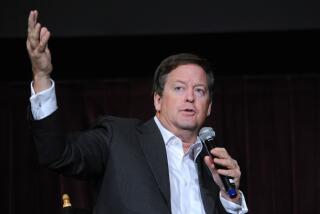Stayin’ for a Spell
Quantity versus quality?
In radio ratings, we usually hear about the former. The numbers most cited are the general measurement of how many people age 12 and older tune in each station during the average 15-minute period. Those are also broken down into narrower demographic blocks by age, gender, economic status and so forth. And then there’s the much-used “cume” numbers, the cumulative total of people who tuned in at least once to a station during a typical week.
John Sebastian, general manager of Los Angeles country music station KZLA-FM (93.9), wants to draw your attention to a different ratings category: time spent listening. It tracks the average amount of time a station’s listeners spend tuned in to the outlet each week.
And well he should want you to notice that. In the latest quarterly report from the Arbitron ratings firm, KZLA stands as the top “non-ethnic” music station in L.A. in that realm, with listeners spending nine hours on average each week.
That’s three hours a week more than top-rated non-ethnic music station KPWR-FM (105.9), nearly two hours more than rock leader KROQ-FM (106.7) and nearly four hours more than pop giant KIIS-FM (102.7). Overall, of the 15 stations ranking higher in average quarter-hour listeners and the 19 higher in cume, the only ones with higher so-called TSLs are Spanish-language music stations KLVE-FM, the new KSCA-FM and KTNQ-FM--the latter with a whopping 12:15 average.
Most significantly, Sebastian says, KZLA’s current TSL is a gain of nearly two full hours since he came on board at the station in April 1996, changing the programming to include such country-influenced or compatible acts as the Eagles, Jackson Browne, Bob Seger and Bonnie Raitt alongside the more conventional country playlist of Garth Brooks, Alan Jackson and, from the classics files, Patsy Cline.
“We’d identified the stations that we had the most audience sharing with--Arrow KCBS-FM [93.1] and KRTH-FM [101.1]--and what we’ve done is found the country-rock songs from those playlists that most fit in with our station and combined them with country,” says Sebastian, referring to L.A.’s leading classic-rock and oldies stations, which have TSL ratings of 6:45 and 5:45, respectively.
“So that’s given people less reason to go back to those stations and more to stay with us. At least that’s my hypothesis.”
Tommy Edwards, program director of KCBS-FM, doesn’t buy the theory entirely--or at least doesn’t believe that the TSL increase is very meaningful.
“Don’t be fooled by this,” he says. “When you’re talking about a huge cume, TSL means everything. But when you have a smaller audience, a big TSL means that it’s only your hard-core fans who are listening.”
Still, Amy Nizich, executive vice president of Western International Media, the West Hollywood ad placement firm, is impressed by KZLA’s gains.
“Time spent listening is very, very important in showing that you’re building an audience,” she says. “You can get people to sample a station, but you can’t get them to stay if they don’t like it. John really has accomplished something. Country had been very hard to do in L.A. before, especially considering how big it is in the rest of the U.S.”
No Tunes Like Show Tunes: The move at KGIL-AM (1260) abandoning the all-Beatles format for an all-Broadway format could prove a shrewd one. While both make for a perfect “default” station--i.e. the one you turn to when no one else is offering anything you like--with playlists about as full as sure things as they get, the show tune approach is likely to appeal to a wider audience, especially in terms of age.
That all depends, though, on what versions of show tunes they serve up. In the introduction, it ranged from sublime to abysmal--the former being the wonderful, scratchy ‘20s and ‘30s vintage recordings played late Saturday night, the latter the discoid synthesizer instrumentals heard Monday morning.
More to Read
The biggest entertainment stories
Get our big stories about Hollywood, film, television, music, arts, culture and more right in your inbox as soon as they publish.
You may occasionally receive promotional content from the Los Angeles Times.










